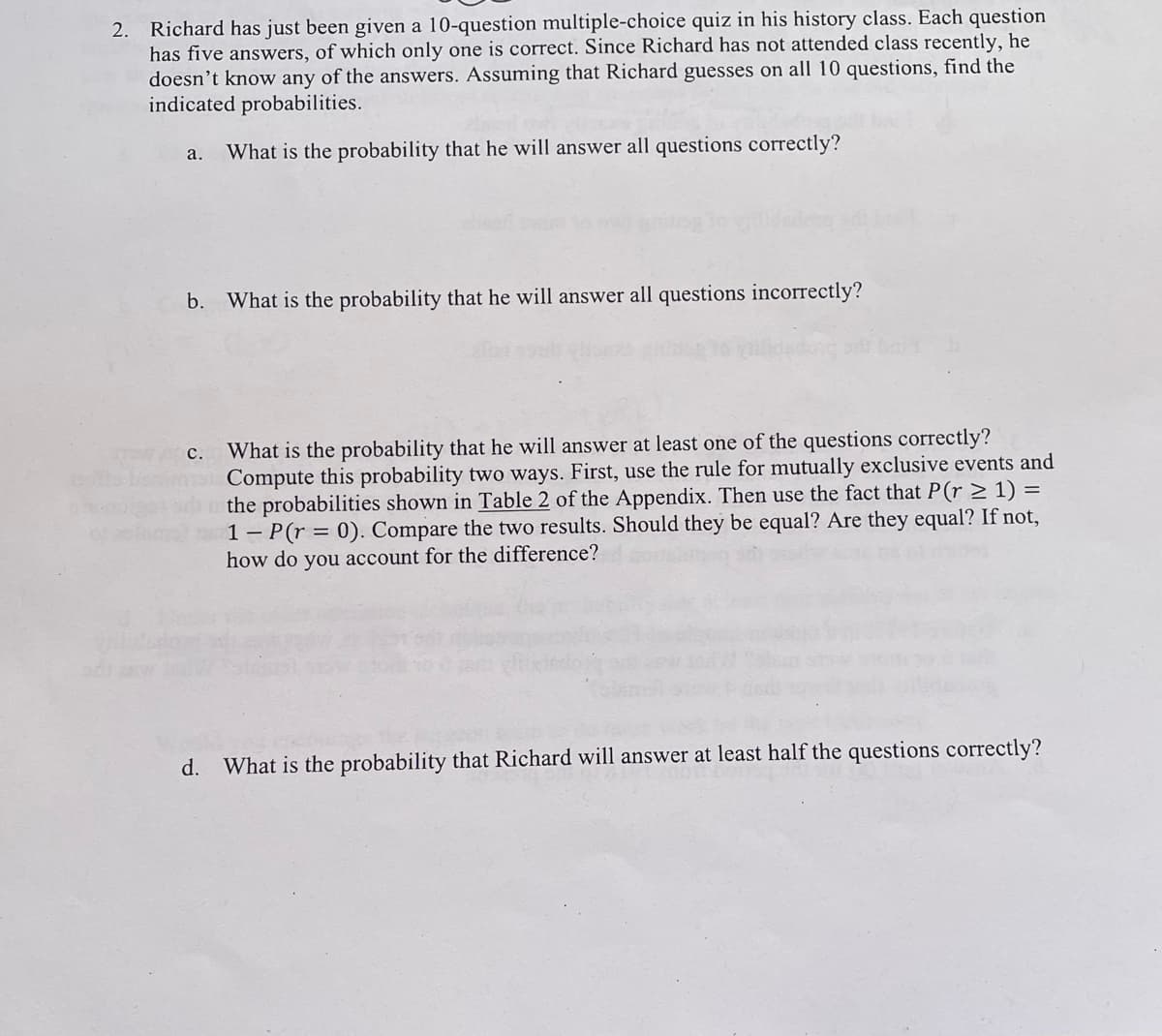a. What is the probability that he wil b. What is the probability that he will answer all questions incorrectly? C. What is the probability that he will answer at least one of the questions correctly? Compute this probability two ways. First, use the rule for mutually exclusive events and the probabilities shown in Table 2 of the Appendix. Then use the fact that P(r ≥ 1) = 1-P(r = 0). Compare the two results. Should they be equal? Are they equal? If not, how do you account for the difference?
a. What is the probability that he wil b. What is the probability that he will answer all questions incorrectly? C. What is the probability that he will answer at least one of the questions correctly? Compute this probability two ways. First, use the rule for mutually exclusive events and the probabilities shown in Table 2 of the Appendix. Then use the fact that P(r ≥ 1) = 1-P(r = 0). Compare the two results. Should they be equal? Are they equal? If not, how do you account for the difference?
Holt Mcdougal Larson Pre-algebra: Student Edition 2012
1st Edition
ISBN:9780547587776
Author:HOLT MCDOUGAL
Publisher:HOLT MCDOUGAL
Chapter11: Data Analysis And Probability
Section11.8: Probabilities Of Disjoint And Overlapping Events
Problem 2C
Related questions
Question

Transcribed Image Text:2. Richard has just been given a 10-question multiple-choice quiz in his history class. Each question
has five answers, of which only one is correct. Since Richard has not attended class recently, he
doesn't know any of the answers. Assuming that Richard guesses on all 10 questions, find the
indicated probabilities.
a.
What is the probability that he will answer all questions correctly?
b. What is the probability that he will answer all questions incorrectly?
c. What is the probability that he will answer at least one of the questions correctly?
Compute this probability two ways. First, use the rule for mutually exclusive events and
the probabilities shown in Table 2 of the Appendix. Then use the fact that P(r ≥ 1) =
1 P(r = 0). Compare the two results. Should they be equal? Are they equal? If not,
how do you account for the difference?
d. What is the probability that Richard will answer at least half the questions correctly?
Expert Solution
This question has been solved!
Explore an expertly crafted, step-by-step solution for a thorough understanding of key concepts.
Step by step
Solved in 4 steps with 14 images

Recommended textbooks for you

Holt Mcdougal Larson Pre-algebra: Student Edition…
Algebra
ISBN:
9780547587776
Author:
HOLT MCDOUGAL
Publisher:
HOLT MCDOUGAL

Holt Mcdougal Larson Pre-algebra: Student Edition…
Algebra
ISBN:
9780547587776
Author:
HOLT MCDOUGAL
Publisher:
HOLT MCDOUGAL